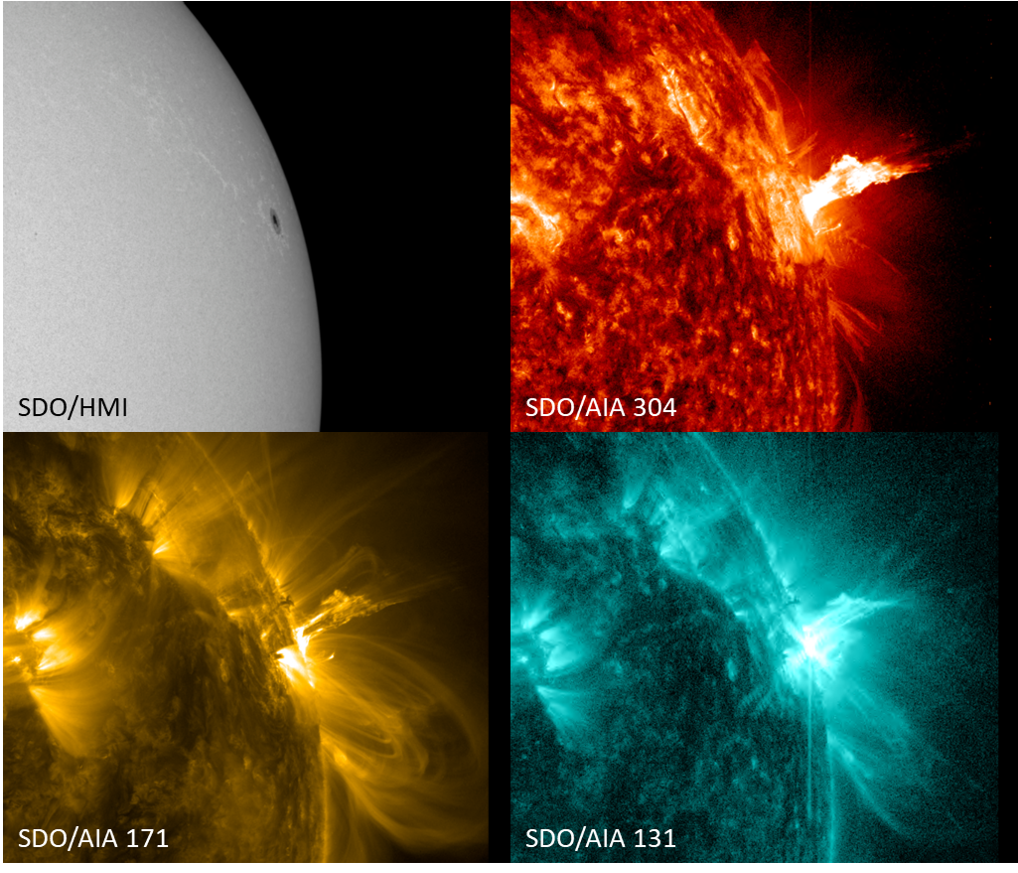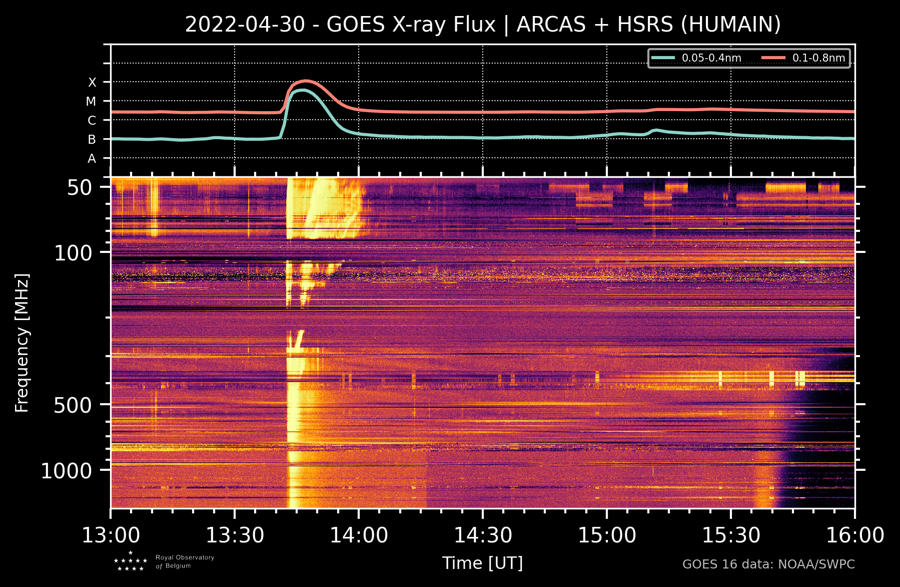Though active region NOAA 2994 (see previous STCE Newsitems here, here and here) rotated over the Sun's northwest limb yesterday evening, it still managed to produce an X-class flare about 15 hours later. GOES observed an X1.1 flare peaking today 30 April at 13:47UT, and extreme ultraviolet (EUV) images indicate NOAA 2994 as the source. The region was also the source of increased M-class flare activity earlier today (GOES).
The compilation underneath shows EUV images of the X-class event at its peak time in SDO/AIA 304 (temperatures around 80.000 degrees), AIA 171 (temperatures around 700.000 degrees), and AIA 131 (multimillion degrees). The white light image (SDO/HMI) indicates that the visible lone sunspot (NOAA 2995) is not involved in the flare generation (overlay).

The clip underneath shows EUV images of the flaring event as seen in AIA 304, which clearly was a complex eruption. As the x-ray emission of the flare affects the inner portion of Earth's ionosphere, radio blackouts at high frequencies were most likely experienced over the Atlantic, West-Europe, West-Africa, and the northeast of South-America (map DRAP).

The X-flare was also associated with emission at radio frequencies and as such detected by the Humain Radioastronomy Station in Belgium. Type III and especially Type II radio storms were recorded in the radiospectrogram (horizontal axis: time, vertical axis decreasing frequency). The graph on top shows the evolution of the flares in x-ray (GOES). Type II storms are indicative of coronal mass ejection, but in view of the location of the flare source, it is very likely the CME has no earth-directed component.






